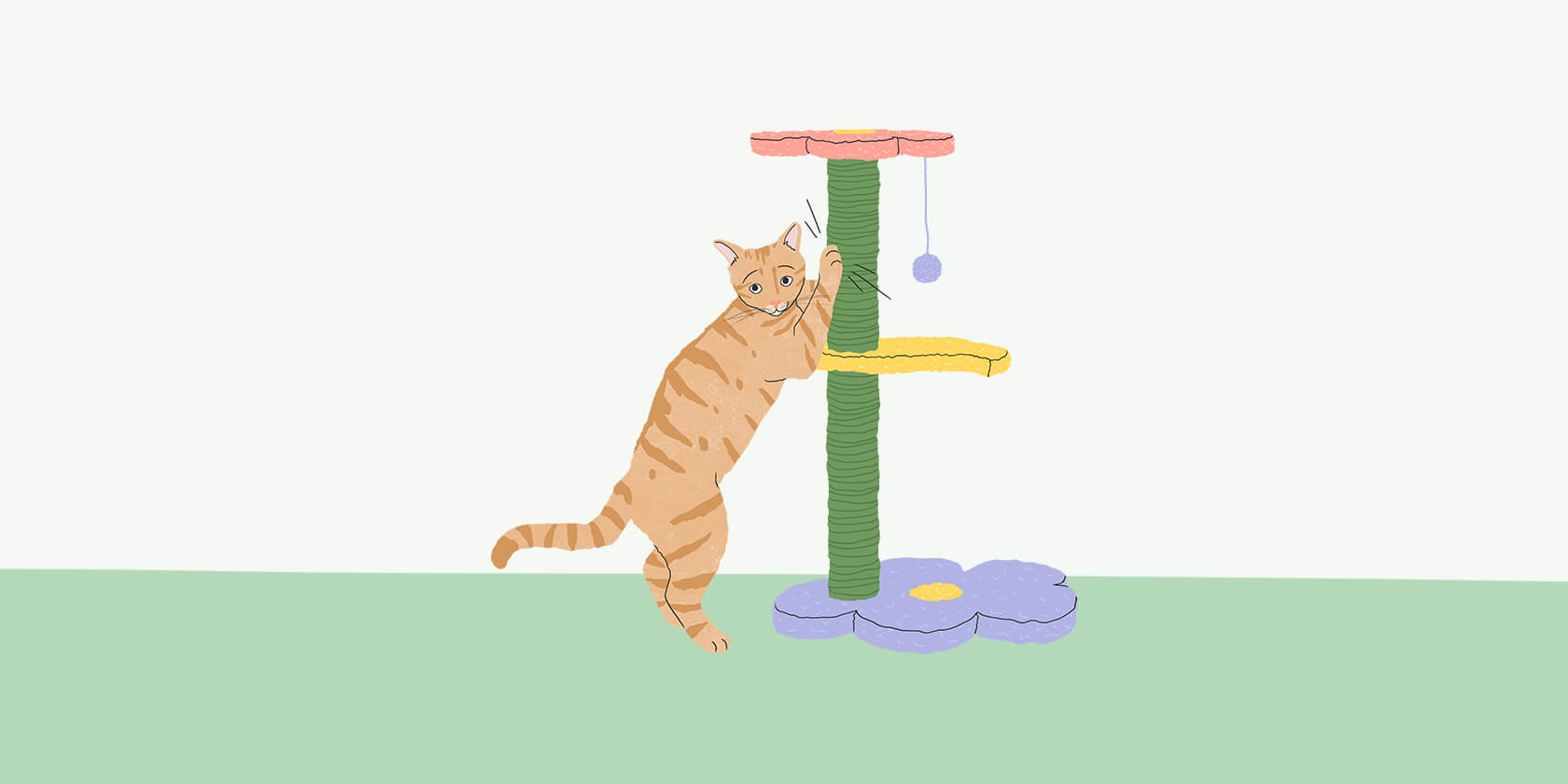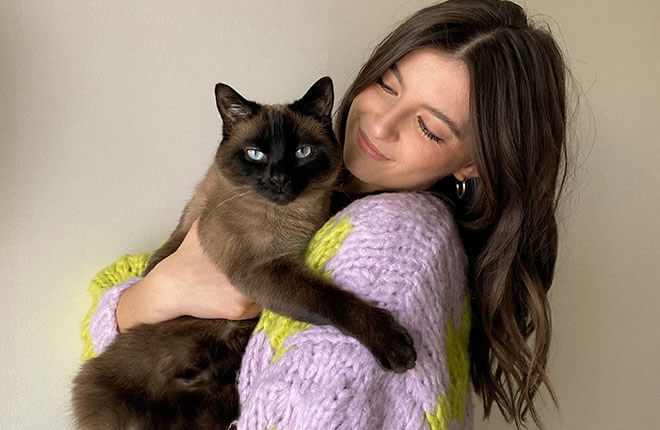Just like humans, cats can have anxiety. And just like humans, it can impact them physically and mentally. An anxious cat may react with fear to new items or changes in their home, even to situations you don’t think would frighten them. It can be difficult to see your furry family member struggling this way, but there are many ways you can help. With a little detective work, patience, and time, you can identify the triggers for your cat’s anxiety and help them overcome it.
But first things first. Signs of anxiety can also be symptoms of pain or a medical condition. If you feel your cat is suffering from anxiety, see your family veterinarian to rule out any underlying health issues. If pain or a medical condition is uncovered, treatment may be all that’s needed to get your kitty feeling like themselves again.

Signs of Fear and Anxiety in Cats
Once you’ve ruled out pain or a medical issue, the next step in helping your cat with their anxiety is to correctly identify it. Signs of anxiety in cats are generally more subtle than you’d think. Picture the “Halloween cat” with puffed-up hair, arched back, and a threatening hiss— that’s not what you’re likely to see. Although they can present in a variety of ways, anxiety symptoms fall into a few key categories.
Changes in their daily habits:
- House-soiling issues, going outside the litter box
- Changes in appetite or weight
- Sleeping more
- Diarrhea and/or vomiting
More significant signs of fear and anxiety include:
- Trembling or shaking
- Rapid breathing
- Avoiding eye contact
- Tail flicking or tightly held against their body
- Dilated pupils
- Hiding and withdrawal
- Crouching down and/or leaning away
- Hair standing up
- Flattening ears against their head
- Excessive vocalization through meowing, yowling, hissing, and growling
- Licking their nose frequently
- Excessive grooming often leading to hair loss or skin sores
- Pacing around the house (typically accompanied by meowing)
- Overreaction to noises and/or movement
- Aggression towards people and/or other pets in the household
- Destructive behaviors like furniture scratching
- Following people around the house
If your cat is only having the occasional sign of fear or anxiety, it doesn’t necessarily mean they’re clinically anxious. They may just be reacting normally to something like a sudden loud noise or change to their routine. If they’re regularly experiencing more than one of the signs above, anxiety is a concern. Now you can get down to the business of helping to alleviate it.
How to Help a Cat with Anxiety
It’s important to understand that cat anxiety is rarely solved with just a single action. To truly help your cat and see lasting results, you’ll want to approach the problem from a few different angles simultaneously. You can apply this approach to almost any behavior concern:
- Identify the cause of the fear or anxiety/behavior
- Find ways to remove those causes or triggers
- Give your cat positive alternatives to their anxious behaviors
- Transform their environment to promote continuous improvement and long–lasting results
Let’s look at how you can put these steps into practice.
Identify the Cause or Triggers of Your Cat’s Anxiety
Cat personalities can be incredibly diverse, and so are the causes of their anxiety. The rumbling noise of an unbalanced washing machine may cause one cat to run away in fear and leave another completely unfazed. Anxiety is defined as the anticipation of a threat or danger — real or not (it's real to your cat).
Common causes:
- Sudden changes in their environment (territory) or routine
- Loud noises
- Foreign smells
- Unstable relationships with people and/or pets in the household
- Resource competition (e.g., food, litter boxes, affection)
- Boredom, inactivity
- Lack of socialization at a young age
- Animals outside the home (especially stray or neighborhood cats)
Remove the Triggers Causing Anxiety in Your Cat
Reduce stress by lessening or preventing exposure to the source of the stress you’ve uncovered. For example, if neighborhood cats are lingering outside your house and causing your cat angst, use humane deterrents to keep them away or block your cat’s view to those areas of your yard.
Provide Positive Alternative Behaviors Through Enrichment
Cats have instinctual needs that, when met properly, can dramatically impact their quality of life and state of mind. Giving them opportunities for play, hunting behaviors, mental stimulation, and of course, a sense of safety and security is a surefire way to alleviate anxiety. Try social enrichment activities such as:
- Interactive play
- Affection
- Cognitive enrichment through food puzzles and training sessions
Transform the Environment
Use some of these environmental enrichment ideas to create a space that allows your cat to naturally adjust their behaviors and ease feelings of anxiety:
- Elevated spaces for climbing, like a cat tree, are important for a sense of safety
- Cat perches with a view to the outdoors
- Peaceful retreats like cat beds and cardboard boxes
- Safe outdoor areas like an enclosed patio - i.e. a catio
- Variety of scratching posts
Additional Tips and Tricks to Help Your Anxious Cat
- Make gradual changes. Introduce changes to your cat’s environment and routine slowly. If you’re rearranging furniture, do one room at a time. If moving to a new home, confine your cat to a smaller area and introduce them to other areas over days or weeks. If you bring home a new pet, be sure to talk with your veterinarian about gradual introductions.
- Provide comfort. Just like a scared child needs comfort, the same may be true of a scared cat. However, be cautious and watch the cat’s body language. Some frightened cats may react with a bite or a scratch.
- Calming products. There are calming products that can be helpful, like sprays and diffusers that release a substance mimicking natural cat pheromones. However, they should not be relied on as a sole solution. Be sure to check with your veterinarian for recommendations on medications or other treatments to help control your cat's anxiety.
- Anxiety medication. In some cases, your veterinarian may prescribe an antianxiety medication to help your cat cope with stressors more effectively. These medications can be very helpful but should be used alongside your environmental changes, not as a replacement.
- Never use punishment. Punishing an anxious cat only makes the situation worse and increases their fear response. This includes all forms of punishment, like hitting, swatting, yelling, and squirting with a water bottle.
When it comes to your cat's anxiety, first Identify the signs and triggers. Then, speak to your veterinarian about the different options that will be best for your cat.
ZPC-01219R1



.jpg)

